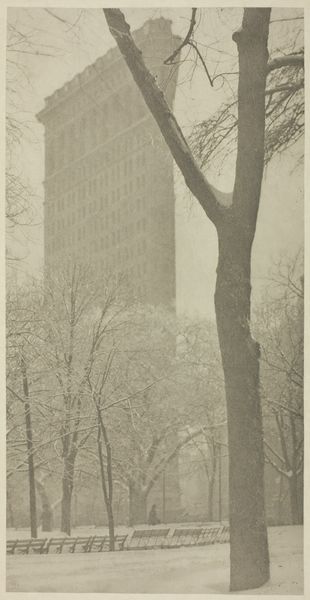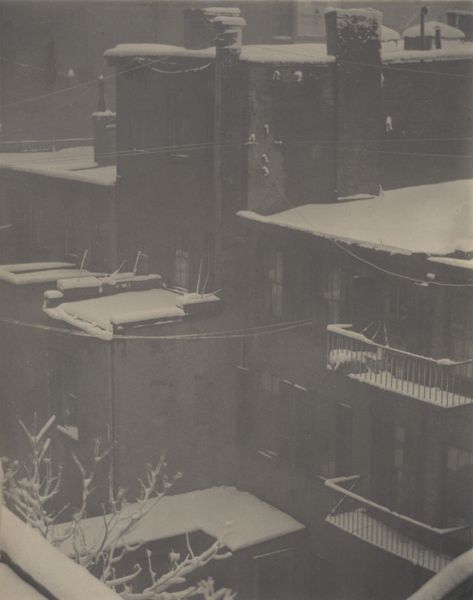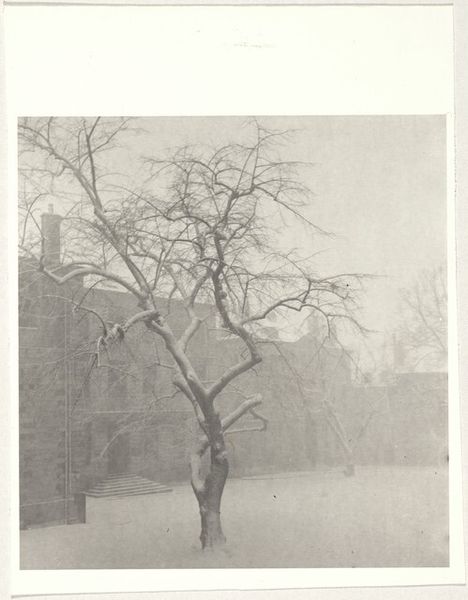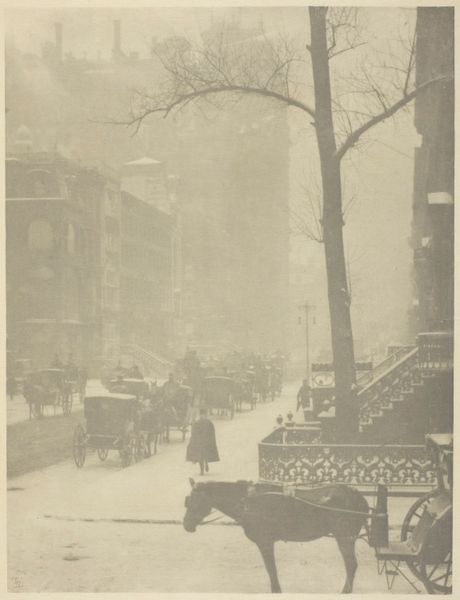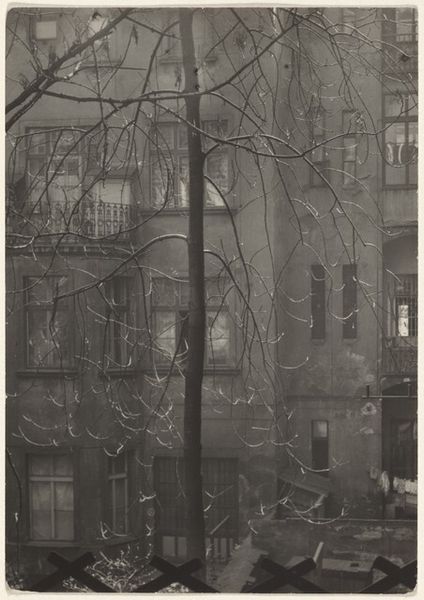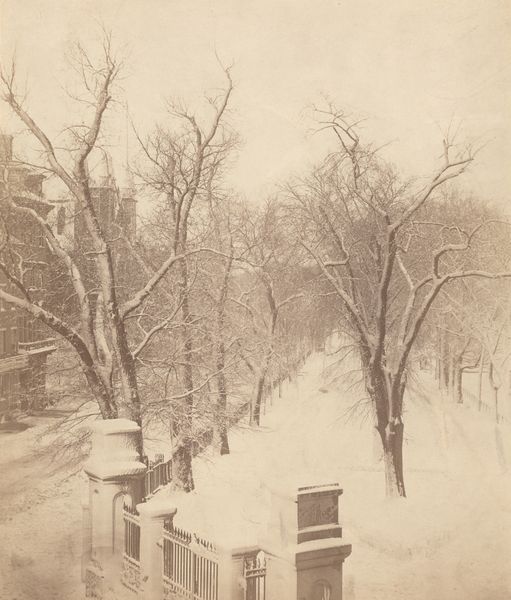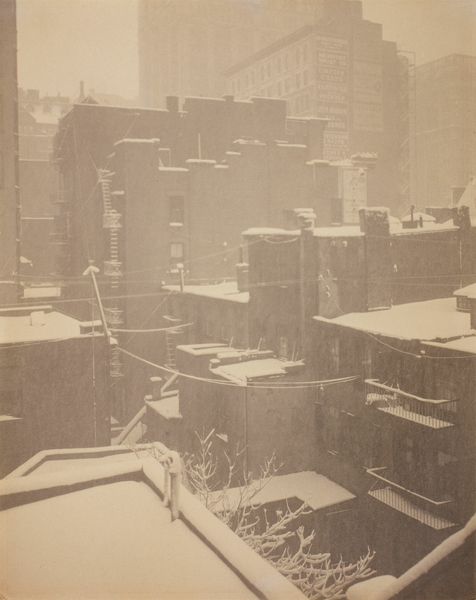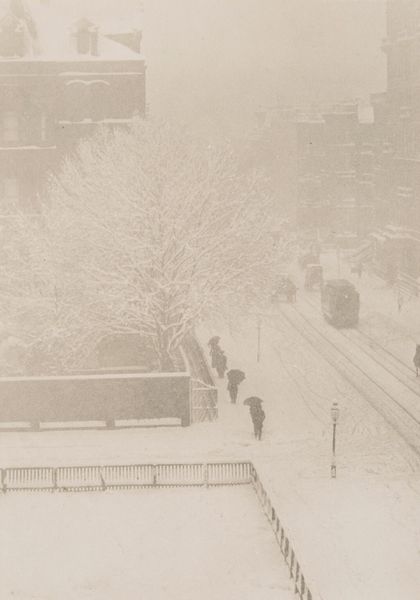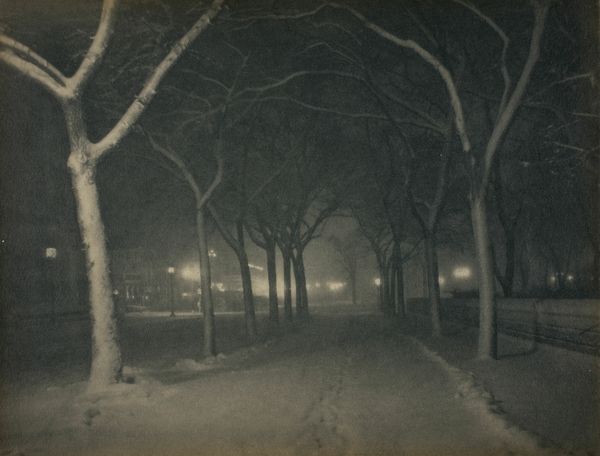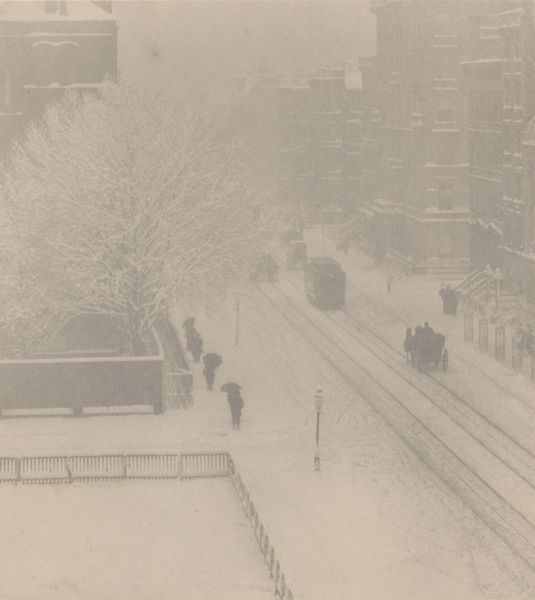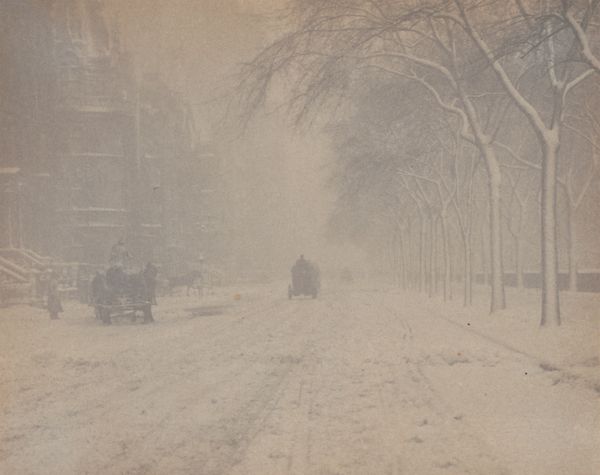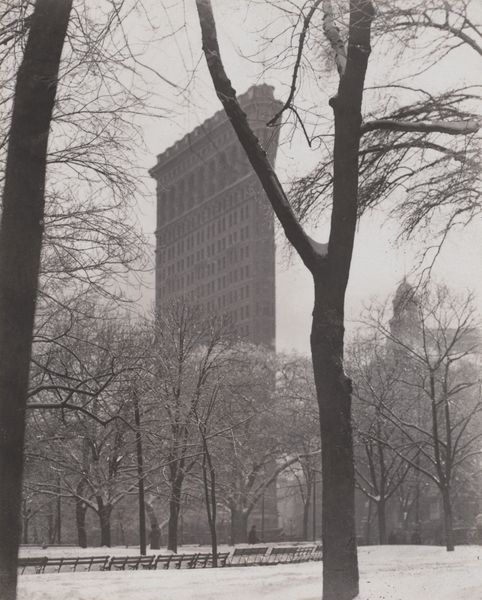
Dimensions: 6.9 × 5.2 cm (masked image); 7 × 7.2 cm (image); 8.2 × 8.2 cm (slide)
Copyright: Public Domain
Curator: Let's discuss Alfred Stieglitz's photograph, "Tree in Snow, New York City," likely captured between 1900 and 1902. It’s currently part of the Art Institute of Chicago's collection. Editor: It immediately evokes a feeling of urban isolation. The muted tones and hazy atmosphere create a sense of stillness, despite presumably being in the heart of the city. The sharp verticals of the bare tree trunks offer a visual grounding. Curator: Indeed. The photograph's structure hinges on the contrast between the organic, irregular lines of the tree branches and the geometry of the surrounding architecture. Note how Stieglitz balances light and shadow, obscuring details to emphasize form. This Pictorialist technique moves the photography toward the realm of the subjective impression. Editor: The birds perched on the branches become potent symbols of resilience, don’t they? Clinging to life amidst the starkness of winter and the imposing cityscape. They represent the spirit enduring within the rigid structures. This calls to mind ideas of transition, and life clinging to survival despite it. Curator: Yes, and consider the material texture. The soft focus almost dissolves the boundaries between objects, rendering the scene with a palpable sense of atmosphere and using the tonal scale to invoke a deep reading into subject and scene. Editor: And the fact that the trees appear caged or fenced off further reinforces the theme of nature constrained by urban development. Those barricades surrounding each sapling almost act as tiny protective symbols. It makes the tree seem particularly delicate in a harsh environment. Curator: I would argue that the tree's placement and the cage function compositionally to draw the viewer into the background; to engage with a subject more distant. The image's meaning arises through an almost poetic interplay between line, tone, and shape. Editor: Ultimately, I see a compelling image about hope. This speaks to the capacity for renewal even amidst urban isolation. It gives a quiet promise of spring despite its depiction of deep winter. Curator: It does showcase how photographic elements and tonal composition alone can invoke complex reflections on man, nature, and hope in even the simplest urban scenes. Editor: It does, yes; and its simple subject matter has resonated for generations.
Comments
No comments
Be the first to comment and join the conversation on the ultimate creative platform.

